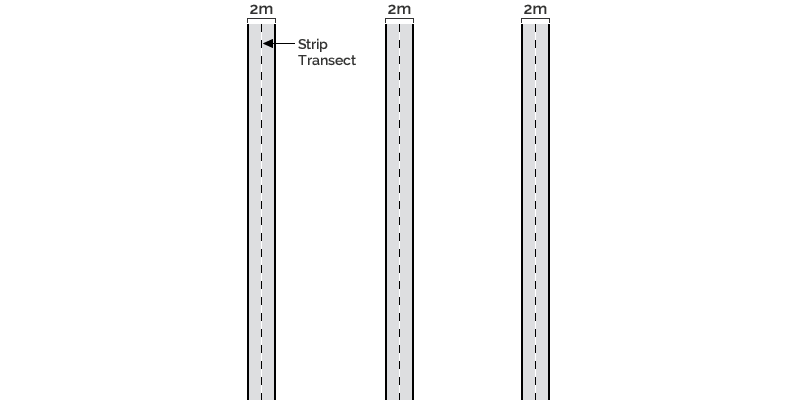Dung Transects
This method relies on estimating the elephant population size by counting dung piles and knowing how often elephants defecate and how fast dung piles decay. Based on published studies, researchers determined the average rate that elephants defecate: 19.77 dung piles per elephant per day. They gathered information on the time dung takes to decay to the point of disappearance at 14 sites across various habitats and seasons and calculated the average, which was 81.82 days. The survey areas in each of the five countries were divided into strata, and a minimum of 15 transect lines per stratum were regularly placed perpendicular to features such as roads and rivers to avoid sampling bias.
Dung transects were performed in one of two ways: the line transect method or the recce method.
Line transects – Observers walk along transect lines and measure the perpendicular distance from the transect to the center of each dung pile they observe. Even though the dung piles are distributed over the landscape, they become harder to spot the farther they are from the transect line, decreasing the chance of detection. Modeling software is used to compensate for the missed dung piles and produce a corrected estimate of the total number of dung piles within a maximum distance from the line.

Recces – Observers walk along lines and count all dung piles they observe within a 2-meter strip (1 meter on either side of the line). It is assumed that the observers detect all of the dung within the 2-meter strip.

The density of elephants within the sampled area can be estimated using the following formula:
Elephant Density = (dung density)/(defecation rate x decay time )
The number of elephants in the population was then estimated by modeling. The relationship between elephant density and a number of variables known to affect elephant abundance was calculated using multiple models. The models that best fit the data were chosen, and then, using maps that cover the entire range, the selected models were used to predict elephant density in areas that were not sampled.